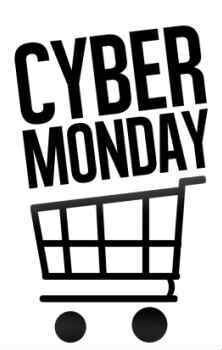Retail and E-commerce in the USA
Physical Stores in America Transform into E-tailers
Traditional stores in America are adapting to the shopping habits of Millennials. While online sales are growing exponentially, traditional retail sales through physical stores continue to dominate and are experiencing growth, even among Millennials. This marks the emergence of e-tailers in the American market.
Updated Data on Total Retail and Online Sales in America
[Data as of November 17, 2023; figures in millions of dollars; source: US Census Bureau]
| Quarter |
Total Sales |
Online Sales |
% Online of Total |
Total Change |
Online Change |
| Q3-2023 |
1,825,254 |
284,103 |
15.6% |
2.3% |
7.6% |
| Q2-2023 |
1,797,503 |
277,841 |
15.5% |
0.6% |
7.6% |
| Q1-2023 |
1,798,161 |
271,867 |
15.1% |
3.4% |
7.5% |
| Q4-2022 |
1,783,986 |
264,689 |
14.8% |
6.1% |
7.5% |
| Q3-2022 |
1,785,006 |
264,105 |
14.8% |
9.7% |
11.0% |
Data from the US Census Bureau indicates that total retail sales and online sales in the U.S. are rising concurrently. In other words, online sales are not cannibalizing total retail sales. When cross-referencing this data with statistics on store openings and closures, we can better understand the phenomenon of e-tailing in the USA.
Store Openings and Closures in America
Another indicator of the convergence between online and traditional retail sales comes from the statistics on store openings and closures in America.
In 2022, for the first time since 2016, more stores opened than closed: 5,103 new stores versus 2,603 closures. As of August 2023, Coresight Research estimated 3,448 store closures and 4,427 new store openings for the year. Additionally, a Business Insider report from October 18, 2023, noted that over 2,800 store closures were planned for 2023.
Millennials’ Influence on FMCG Sales
According to Nielsen, 60% of Millennials’ FMCG purchases in the U.S. are still made in physical stores. However, digital platforms play a crucial role in influencing these in-store purchases. Millennials, being more active on social media than previous generations, frequently research everyday products online, such as groceries and personal care items, before buying them.
E-commerce Expands to Everyday Products
Digital platforms are no longer just for research; they have become lucrative sales channels for FMCG products. Millennials are driving the growth of e-commerce in this category, with 61% reporting that they purchase FMCG items online. The shift is also influenced by subscription-based services, which Millennials prefer for convenience and efficiency.
How Millennials’ Shopping Models Are Changing
As Millennials age and become parents, their shopping patterns evolve. They increasingly buy home goods, baby care products, and groceries online, at higher rates than the average American family. While most Americans prefer home delivery for online purchases, Millennials favor e-tailers offering subscription services. In fact, three of the top five FMCG categories they buy online are subscription-based.
Smartphones and Online Shopping
Smartphones are the go-to devices for quick purchases. Over 40% of Millennials shop via their smartphones, 10% more than Gen X. Less than 50% of their online purchases are made using desktop or laptop computers, a lower percentage than older generations. Millennials are also more comfortable researching products online and on social media before making a purchase.

 (+1) 718-5225575
(+1) 718-5225575



